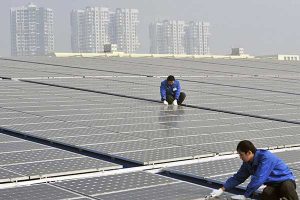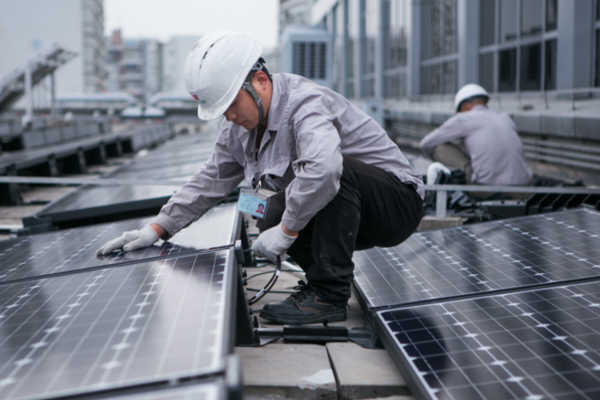- The International Energy Agency reports that global investment in solar power is set to outpace all other electricity sources, reaching $500 billion this year.
- This surge highlights a significant global commitment to clean energy, driven by reduced solar panel costs and the urgent need to address climate change.
- However, regional disparities in investment remain a critical challenge.
In an epochal shift, global investment in solar power is set to outpace all other forms of electricity generation, with the International Energy Agency (IEA) projecting a staggering $500 billion investment in solar energy this year. This unprecedented surge underscores a dramatic evolution in the global energy landscape, driven by a remarkable 30% decrease in solar panel costs over the past two years.

The International Energy Agency works with countries around the world to shape energy policies for a secure and sustainable future.
According to the IEA’s latest report, investment in clean energy will total $2 trillion in 2024, doubling the funds allocated to fossil fuels. This historic milestone marks the first instance where combined investments in renewable energy and grid infrastructure have overtaken those in fossil fuels.
“Clean energy investment is setting new records even in challenging economic conditions, highlighting the momentum behind the new global energy economy,” noted IEA Executive Director Fatih Birol.
Driving forces behind the clean energy boom
The drive towards cleaner energy is being propelled by both corporate and governmental sectors, spurred by the imperative to mitigate carbon emissions from fossil fuels, the primary culprits in climate change. Enhanced supply chains and lower costs are also catalyzing investment in diverse clean energy technologies, including wind turbines, electric vehicles, heat pumps, and nuclear power generation.
China is at the forefront of this renewable energy push, channeling the largest share of investments into solar power. The IEA report reveals that investments in solar PV now exceed those in all other electricity generation technologies combined.
In contrast, global investment in upstream oil and gas is anticipated to increase by 7% in 2024, reaching $570 billion. This uptick follows a similar rise in 2023, highlighting that while fossil fuels still command substantial investment, their growth rate is eclipsed by the burgeoning renewable sector.
Addressing regional investment disparities
Despite these advancements, the IEA warns of “major imbalances and shortfalls in energy investment flows” in various regions.

Technicians maintain solar panels on a roof at a solar power plant in Wuhan (Hubei /Quartz)
In many emerging and developing economies, clean energy projects remain financially unviable. Excluding China, these economies have collectively invested around $300 billion in clean energy, significantly below the threshold needed to satisfy their escalating energy demands.
Birol stresses the necessity for a more equitable distribution of investments, stating, “More must be done to ensure that investment reaches the places where it is needed most.” The agency underscores that to meet global climate goals, renewable energy investments must be doubled by 2030.
The IEA’s findings signal a pivotal moment in the global energy narrative. As solar power garners unprecedented investment, it epitomizes a broader shift towards a sustainable, low-carbon future.
However, addressing the existing disparities in investment distribution remains critical. Policymakers and investors must collaborate to rectify these imbalances, ensuring that the benefits of clean energy are accessible worldwide, thereby fostering a truly global energy transformation.
This momentous pivot towards renewable energy is not just an environmental imperative but an economic one, underscoring the inexorable march towards a sustainable future. As the sun sets on fossil fuel dominance, the dawn of a new energy era is firmly on the horizon.












Comments